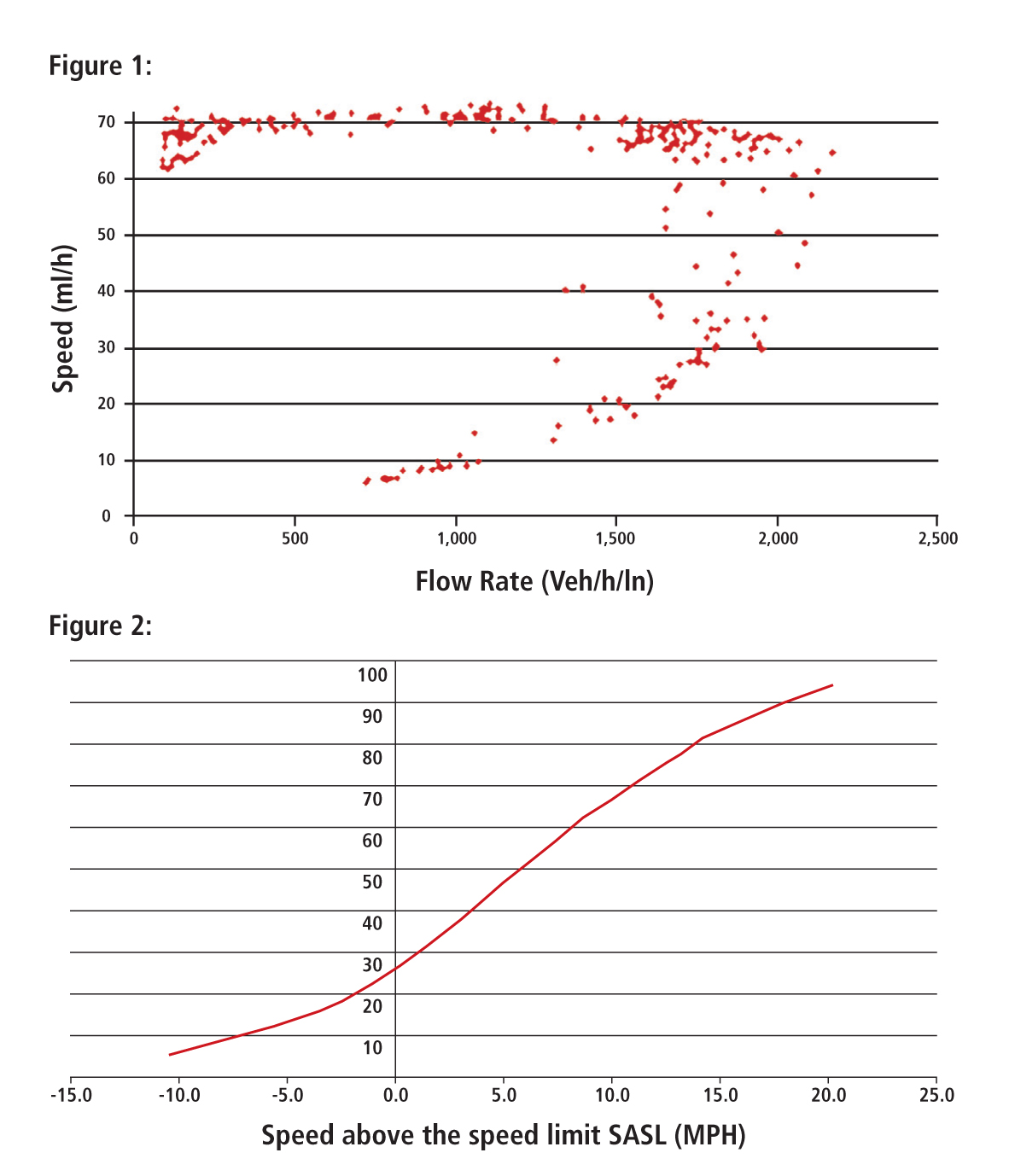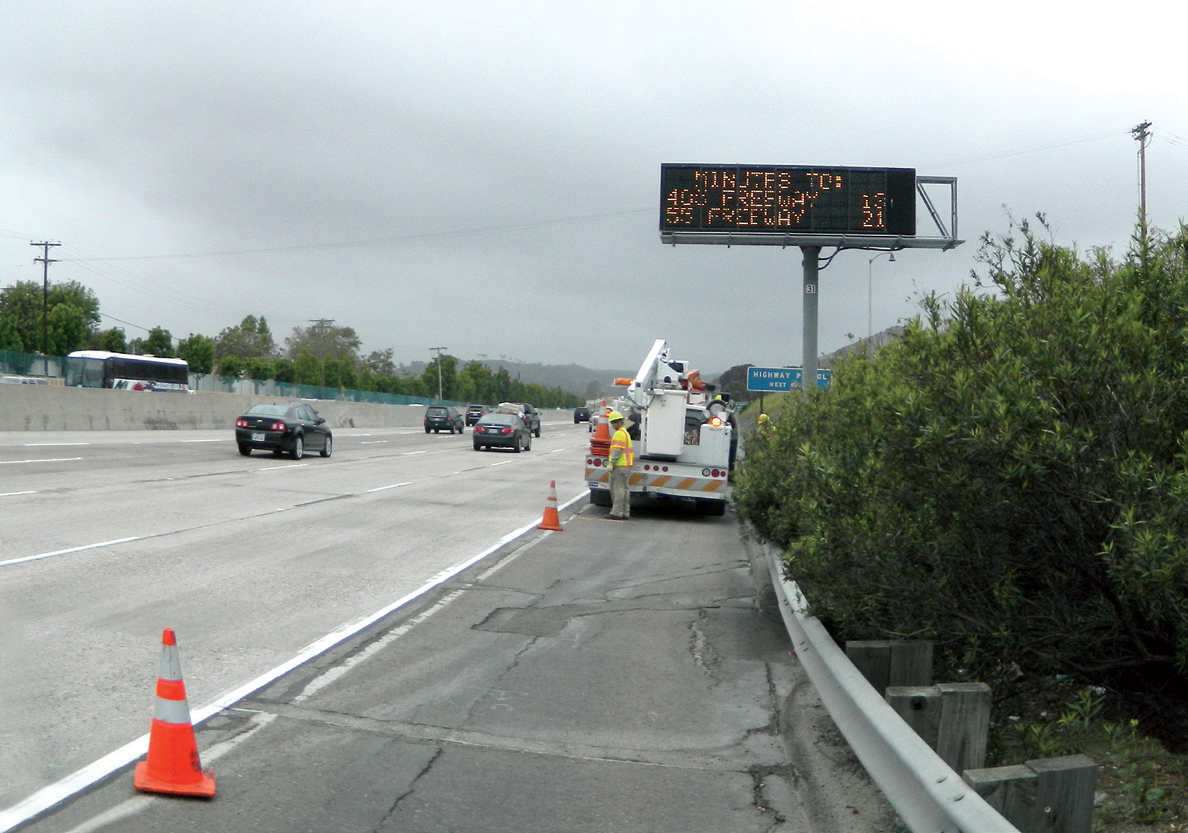
Delivery of traffic information to motorists by dynamic message signs (DMS) has proven to be popular and is a principal tool for conveying information developed by the traffic management centre (TMC) to the public. There are, however, limitations in the use of physical DMS as the means of motorist communication (see Limitations of DMS).
ETSIMS Lite helps motorists avoid these problems by bringing the information into the vehicle (with an audio presentation to the motorist) at ap-propriate locations in advance of the physical sign, thereby expanding the ‘reach’ of the sign. In many cases, physical DMS on surface streets has a rela-tively narrow reach because motorists on nearby links who may also benefit from the message have no view of it. The ETSIMS Lite messages may be more comprehensive than those on the physical DMS. ETSIMS Lite also supports the capability to provide in-vehicle messages at locations for which no physical sign is present (pseudo DMS). Because of physical constraints or environmental limitations, it is sometimes not feasible to place DMS at the desired location on surface streets – so pseudo DMS may be used for this purpose.
ETSIMS Lite provides compatibility for devices for active traffic management (ATM). These include lane control signals, variable speed limit signs and active pavement markings in addition to DMS. ETSIMS Lite synthesises messages designed to capture the intent of the ATM controls and to provide it at appropriate vehicle locations.
Arterial DMS
Figure 1 illustrates the geometric relationships that characterise ETSIMS Lite. It shows a DMS located on an arterial that also has immediate access to a freeway. A catchment domain is associated with the DMS. The figure defines a set of directional roadway links within the catchment domain. If a vehicle is on one of the appropriate links and travelling in the appropriate direction, it will display the DMS message or an appropriate enhancement of the message by audio techniques. Thus, the catchment domain serves to define the vehicle’s eligibility to receive the message and expands the reach of the DMS. Receiving these messages in the catchment domain facilitates the motorist’s decision to choose or not in a corridor consisting of a freeway and parallel arterials at a more convenient time in the journey, and provides the motorist with more diversion options for vehicles with appropriate loca-tions and headings.
The figure also shows a management domain associated with the DMS and represents the locations for which most of the messages on the DMS will apply. For the DMS in the figure, the messages may apply to the freeway as well as to the surface streets. The management domain helps to establish the priority in which messages will be displayed, and helps to provide criteria to limit the length of messages to avoid driver distraction.
Depending on the vehicle’s location, it may be in the catchment domain of more than one DMS and may therefore receive a number of messages. In order to minimise cognitive driver distraction, ETSIMS Lite couples a priority for the message with a total message size limitation thus assuring recep-tion and display of the most important messages while limiting the potential for motorist distraction. Each ETSIMS Lite message contains the location of the physical DMS or the pseudo DMS for which the message applies.
Synthesising messages
In the case of travel time messages, the vehicle’s actual location will, in most cases, differ from the physical sign location. As a user-selected alternate to the travel time message (which is developed for the DMS location), a description of congestion conditions may be provided. The type of condition de-scriptor messages (e.g. comparison with speed limit) may be used.
Figure 3 shows the general architecture for ETSIMS Lite and summarises its major features. The ETSIMS Lite server is located at the TMC, is operated by a TMC operator, and may be a separate physical unit or functionally integrated with the TMC’s management system. It receives the DMS messages and indications of active traffic management device status from the TMC management system.
The TMC operator functions for ETSIMS Lite include the following:
• Accept TMC messages for the corresponding ETSIMS Lite DMS, or modify the message to provide more detail. Many TMCs use pre-scripted DMS messages, and this pre-scripted set may be enhanced to include expanded ETSIMS Lite messages.
• Accept or modify message priorities, which help to limit the length of the entire set of messages received by the motorist. Priorities are pre-scripted for classes of incidents, delays or other events. In the case of travel time messages, they may be derived from a comparison of current and historic travel time.
• Develop messages for pseudo DMS or select from a pre-scripted set.
• Select messages to describe the intent of active traffic management displays from a pre-scripted set.
As shown in Figure 3, communication from the ETSIMS server to the vehicle is likely to be implemented using cellular phone technology and a suitable website such as the state’s 911 site together with a smartphone app. Audio presentation of the messages is the simplest and least distracting technique and is currently available to most motorists. Alternatively, the connected vehicle architecture comprising roadside units (RSUs) and on-board units may be employed. If the latter approach is used, RSUs are required at appropriate locations in the catchment domains. In some cases, RSUs may already be present at these locations for other purposes.
ETSIMS Lite requires an operator and is best suited for use by organisations that operate TMCs. ETSIMS Alpha is intended for use by organisations such as traffic information services that do not operate TMCs and do not develop and implement the DMS messages. While the ETSIMS Alpha server does not require an operator, it cannot perform some functions of ETSIMS Lite such as enhancement of DMS messages and development of messages for pseudo DMS.












